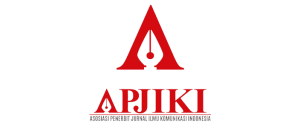Analisis Makna Mitos Generasi Micin Dalam Iklan Sasa
DOI:
https://doi.org/10.30656/lontar.v8i2.2591Abstract
Sasa’s ad Welcome Back Micin Swag Generation version is a flavor product ad that presents an ad concept that is different than the usual. Commonly, flavor ads are identical to cooking activities, however, this time, Sasa brings a new concept by presenting the youth as the ads models. The story in this ad is packed by presenting youth style with their daily activities. The ad seems to offend the stigma that is frequently associated with the youth. One of the examples is the term that heard a lot about “Micin Generationâ€. Through this ad, the advertisers try to bust the society’s perception regarding micin (MSG) consumption that is considered dangerous and linked with the negative behaviors of micin generation. Based on the statement above, the researcher was interested in researching this ad with the title “The meaning of Myth of Micin (MSG) Generation in Sasa Ad Serving Welcome Back Micin Swag Generation versionâ€. This research is a qualitative descriptive by using Semiotic Methods by Roland Barthes. This research aims to understand the meaning of denotation, connotation, and myth regarding Micin Generation showed in the Welcome Back Micin Swag Generation ad. The result gained in this research is, Sasa Company through this ad producing a new myth with today’s youth branding which presenting visuals that the youth has done positive activities based on wants, interests, and talents in their life without restricted by the limits of gender as well as strict rules, and being brave to show their existence.
Keyword: The Meaning Of Myth, Youth, Micin Generation, Semiotics, Roland Barthes
Downloads
Published
Issue
Section
License
By submitting an article to the journal, the author(s) agree to transfer the published article's copyright to the journal, which will act as the publisher. This means the journal will have the right to publish the article in various forms, including reprints. The journal will maintain the publishing rights to the published articles.
In line with the license, authors and third parties (readers, researchers, and others) are allowed to share and adapt the material. In addition, the material must be given appropriate credit, provided with a link to the license, and indicated if changes were made. If authors remix, transform, or build upon the material, authors must distribute their contributions under the same license as the original.






